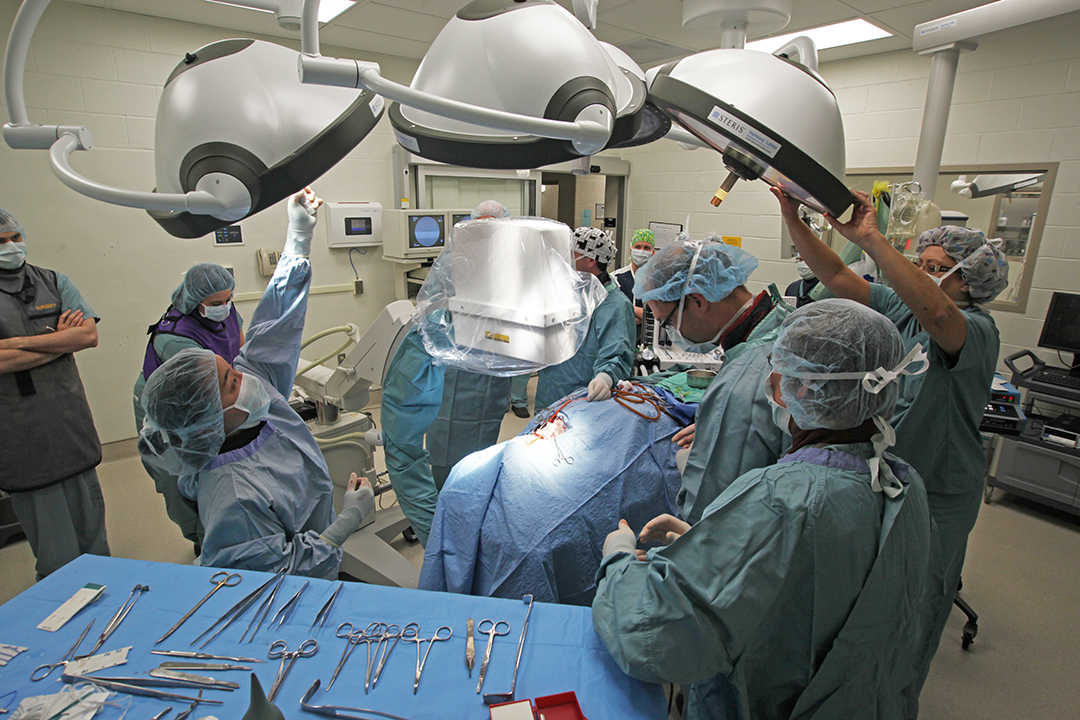
WCVM scientists gain support for biomedical research studies
A recent funding announcement by the Saskatchewan Health Research Foundation (SHRF) includes nearly $540,000 in financial support for four research projects that will be conducted by researchers at the Western College of Veterinary Medicine (WCVM).
By Taryn RiemerSHRF, which supports health research in Saskatchewan and provides public education on provincial health initiatives, released the results for two programs on June 29: the 2018-19 SHRF Establishment Grant and the SHRF Research Fellowship programs. The listing of successful grants included the following WCVM researchers:
- Postdoctoral fellow Xingui Tian, supervised by Yan Zhou (adjunct professor, WCVM Department of Veterinary Microbiology), received $100,000 through the SHRF Postdoctoral Research Fellowship program. His research will focus on the avian influenza viruses H5N1 and H7N9 — two highly pathogenic viruses with pandemic potentials. The goal is to develop novel vaccines for these viruses using enterovirus RNA replicons. Through their efforts, the researchers may provide a novel strategy to produce influenza vaccines that would be safe and could induce broad and long-lasting immune response.
- Emilio Velez is a postdoctoral fellow who is working with Dr. Suraj Unniappan of the WCVM’s Department of Veterinary Biomedical Sciences. Velez received $100,000 through the SHRF Postdoctoral Research Fellowship program in support of his research that focuses on two newly-identified hormones — nesfatin-1 and a nesfatin-1-like peptide (NLP) — that regulate metabolism. The study’s aim is to determine the effects of nesfatin-1 and NLP on growth and growth regulatory hormones. Using mice and cell lines, the research team will study the effects of both nesfatin-1 and NLP on the brain, pituitary, and liver, tissues important in regulating growth.
- T. Dylan Olver, an assistant professor in the WCVM’s Department of Veterinary Biomedical Sciences, received a SHRF Establishment Grant worth $119,991. Olver’s research focuses on the causes of dementia and the mechanisms of brain vascular dysfunction. Evidence indicates brain vascular dysfunction is an underlying cause of dementia, including Alzheimer's disease. The results of his research will provide novel insight into the causes of vascular dementia and identify targets for future prevention and treatment interventions.
- Postdoctoral fellow Alexandra Belotta is working with Drs. Monique Mayer of the WCVM Department of Small Animal Clinical Sciences and Shelley Kirychuk of the U of S College of Medicine. Belotta received a $100,000 SHRF Postdoctoral Research Fellowship to investigate eye protection for veterinary workers who are involved in radiographic (X-ray) procedures. Veterinary workers rarely wear protective eyeglasses during radiographic procedures, and, in contrast to workers in human health care, they are frequently in close proximity to their patients during diagnostic X-ray exposures or fluoroscopy. The study’s aim is to provide information about the dose to the eye of veterinary workers during real and simulated radiographic procedures. Results of this study will help to increase the awareness of the need for eye protection and improve radiation safety practices in small animals business, preventing occupational diseases.
- Maarten Voordouw, an assistant professor in the WCVM Department of Veterinary Microbiology, received a SHRF Establishment Grant worth $120,000 over three years in support of his research program. Voordouw's research targets Lyme borreliosis (LB), an emerging tick-borne disease and a growing public health concern in Saskatchewan. The causative agent of LB in North America is the spirochete bacterium Borrelia burgdorferi, which is transmitted among vertebrate hosts by Ixodes scapularis ticks. Its strain diversity has important consequences for public health including disease severity, diagnostics and control strategies. Voordouw and his team will identify the B. burgdorferi strains that are most likely to invade Saskatchewan by screening nearby tick populations. They will also conduct infection experiments with strains in a rodent host to score infection phenotypes. The researchers will test whether strain-specific infection phenotypes in the rodent host (for example, host-to-tick transmission) predicts the strain-specific frequencies in the wild tick population. This research work will identify which strains of B. burgdorferi are likely to be encountered by Saskatchewan residents and why some strains are more common than others in in wild tick populations. This knowledge of strain diversity is critical for developing effective diagnostic tests and control strategies, which should target those strains that are most common in the local tick populations.
For more information, please visit shrf.ca.
